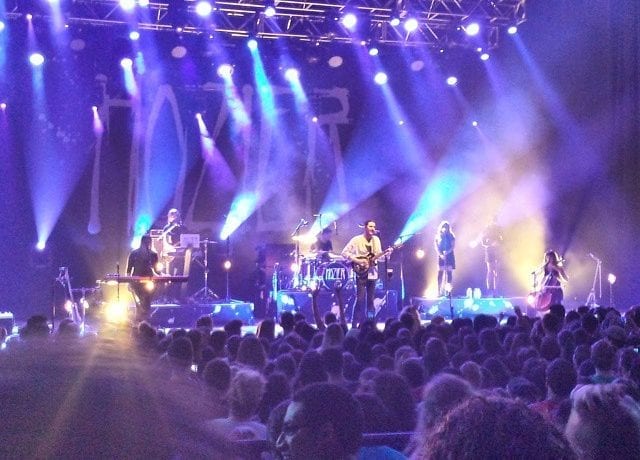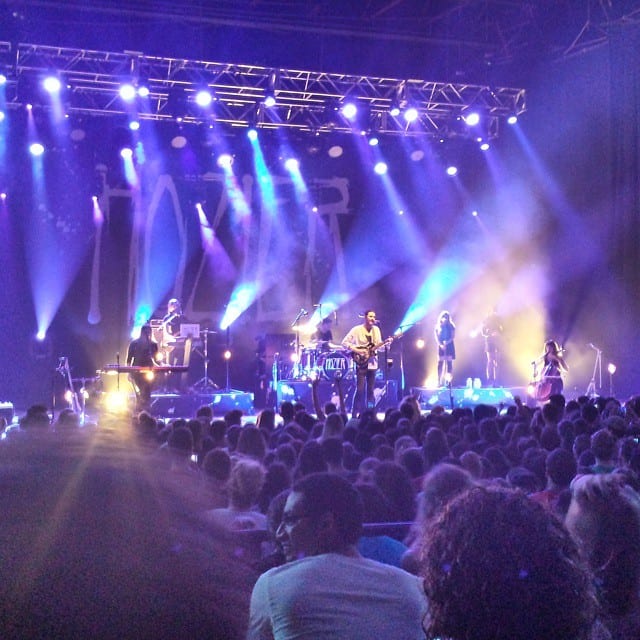Recently, I had the opportunity to attend a concert at a large outdoor amphitheater. This
was the type of place that had a stage with a covered seated pavilion area closest to the stage and lawn seating behind. The forecast for the evening going into the night was calling for a torrential downpour. So aptly, my wife and I prepared ourselves for the worst though our seats were in the covered section, but I was interested in seeing how the venue itself prepared for the situation.
The venue sent out a warning message via Facebook two hours before gates opened to note the impending weather and remind attendees to hang on to their ticket stubs after entry in case they are needed for re-entry. When we arrived, the venue had tarped the sides of the pavilion area to cover the open air seating and make a water runoff from the roof of the main area. Once concert time came around announcements were made to let people know that after the first band came offstage, there would be a 45 minute weather delay in which those sitting in the lawn area would need to return to their cars until they were informed by the venue (via Facebook) to return. Then the weather hit, everyone was safe, the tarping worked, the weather moved on and the lawn attendees returned for a great concert. My point in saying all of this is to show that this venue and concert organizer had a plan in place for this issue (and likely many others as well), and they executed it giving the attendees their best possible outcome given the circumstances.
It reminded me of the importance of planning ahead, and being able to foresee specific issues and ways around them. The nature of trade shows and events generally being off-site and involving a number of different parts and people have a great propensity for disaster. Anyone that has been around this industry knows that anything can and will happen. Murphy’s law typically applies.
Here are a few examples of what can go wrong and what to do to be ready:
-Missing Freight
Given the cost of material handling at shows it is almost unforgivable how often crates and cases are missing on the show-floor, but nine out of ten times they’re just at the wrong booth space. Wood crates and black plastic cases DO look alike, so do something to set yours apart. Similar to how you flag your checked luggage, put some kind of indicator that you or your labor crew can look for. Unique stencils, fluorescent colors, anything that will help it to stand out.
-Bad Internet Connection
Internet at shows is less than reliable. Make sure anything that is internet reliant, has an offline option. Use local servers to host videos, pdfs and software. It will require additional work upfront, but being able to work seamlessly through an internet outage will make it worthwhile.
-Incorrectly Laid Out Wiring
Typically, the first thing setup in a space (electrical wiring, Ethernet, air and drainage tubing) can very often be incorrectly placed. When ordering, detail exactly where everything needs to be located down to the inch. Then provide those plans to your labor crew and have them verify these locations first. After an exhibit is setup it can be challenging to rework wiring under the floor, so make it first priority to verify the correct layout.
These aren’t the most major issues, just common ones, but be sure to plan for all types. As you can see above, when you can come up with the issues ahead of time, you can also create ways to limit problems or ways around the issue entirely. Of course, there will inevitably be issues that come up that no one expects. So, build a trustworthy team with people both in your organization and from your vendors to help troubleshoot and work through the unforeseen.
What are the most common trip-ups at your shows and events? What creative ways have you found to plan for/eliminate these?
Author: Chase Howells
Your feedback is greatly appreciated on this post. Please contact me using the links below:

